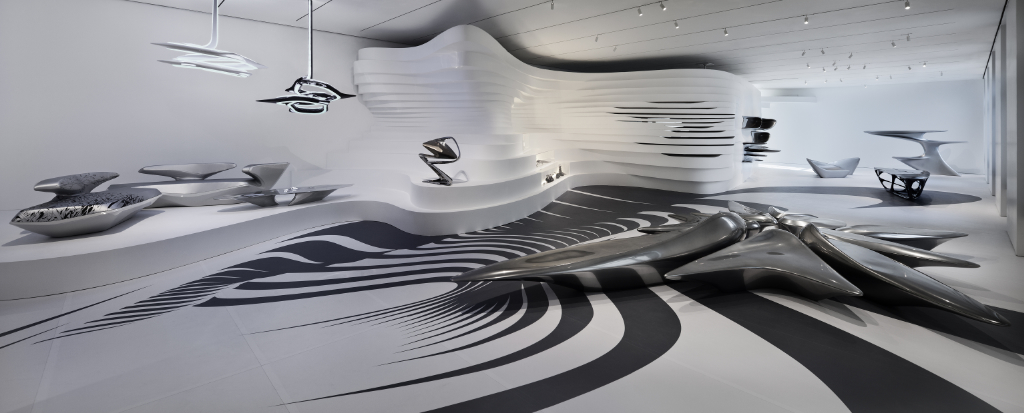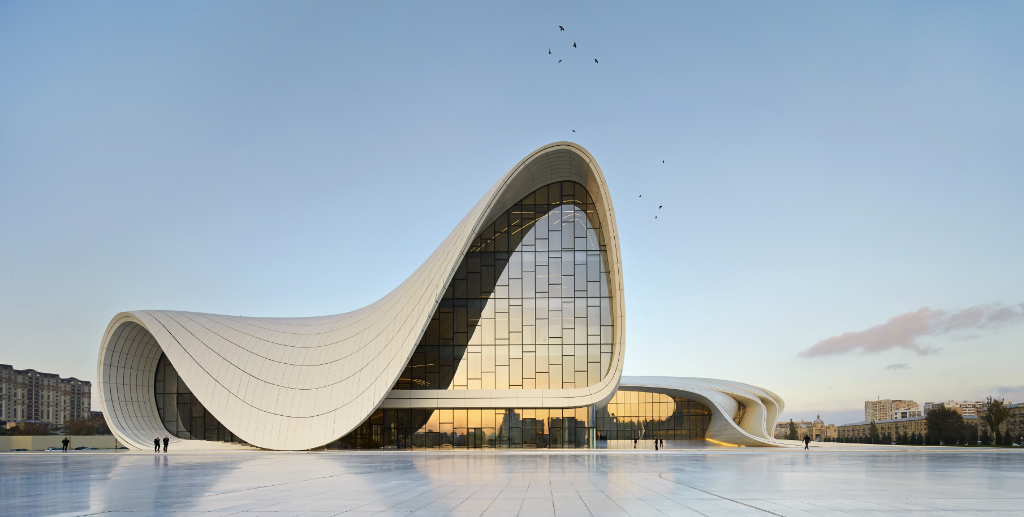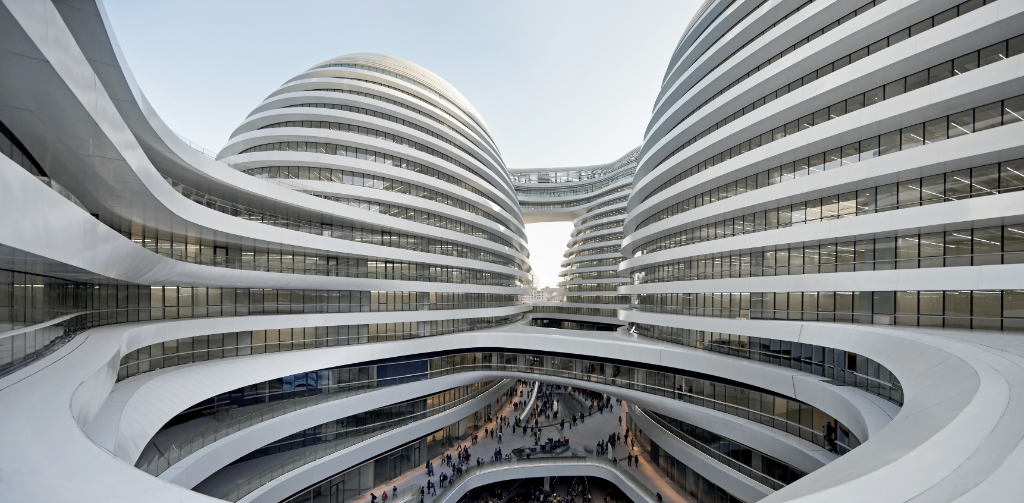Interview by Simona Serban

Between July 3 and August 29, the Modern Art Museum (MAM) Shanghai hosts the Close Up – Work & Research exhibit, where visitors are invited to get a glimpse into the world of Zaha Hadid Architects. The exhibit – ZHA Close Up – Work & Research – will display to its guests a cross-section and timeline panorama of the studio’s 40 years of innovation-based research – new design, new construction techniques, and material innovations.
Displayed at the MAM will be a selection of architectural models and prototypes, project exhibition sketches and drawings, project renders, photographs and large video projections of built work and projects under construction. Shai Baitel is the artistic director at MAM Shanghai and the curator of ZHA Close Up – Work & Research.
In addition, the exhibition will portray a selection of Chinese projects that have not been exhibited before, an extensive portfolio of multidisciplinary research projects, experimental designs and a selection of furniture and product designs from Zaha Hadid Design (ZHD) and ZH Collection, with long-standing collaborations alongside other brands.
The practice results from over 40 years of research and development, consisting of an adjacent path. On this path, Zaha Hadid displays her recognisable signature designs alongside her iconic vision for contemporary design within the fashion industry, lighting design and innovative furniture items. These designs convey the relinquishment of conformity in the quest for eminence and innovation.
The Modern Art Museum (MAM) in Shanghai, China, is an institution with a global and multidisciplinary approach, contributing to the education, knowledge and enjoyment of art through an immersive and engaging experience; it is the largest contemporary art museum in Shanghai, located in the centre of Shanghai’s cultural mile along the Huangpu River, a premier institution for contemporary art with a global and multidisciplinary approach. Here is brought to light for the first time in China the late Zaha Hadid’s legacy, the current vision of Zaha Hadid Architects and the chance to immerse into their world perspectives.
The 40 years of architectural experiences are displayed masterfully to showcase the full process of each project so that the viewers will be able to experience the processes, the journey, and the final products. As Zaha Hadid Architects demonstrate, spatial creativity is key with each finished project and their constant desire to inspire the world and innovate while being environmentally sensitive.
Zaha Hadid Architects was founded in 1979 by the late Zaha Hadid, a major figure in the world of architecture and the first woman to receive the Pritzker Architecture Prize in 2004. She first visited China in 1981, when she began studying the relationship between Chinese historic architecture and natural landscapes. As the architectural practice grew with each new design and research-based type findings, their work became an example of authentic creation at the forefront of contemporary architectural practice.
ZHA Close Up – Work & Research unravels a collection of intricate experimentations with technology, spatial creativity, design innovation, and inventive and environmental awareness, displayed across the last 4 decades, showcasing the authentic creative power of ZHA. To create such an exhibition of this level of complexity and architectural importance, it was important to also include within the exhibition projects that have received the highest honours from civic, professional and academic institutions worldwide.
The exhibit conveys to its visitors the pioneering research alongside the interconnected relationships present in all their global projects, detailing the technological innovations transforming how the studio researches, envisions, designs and innovates with care and detailed attention to the natural environment.
The guests will find representations of the studio’s pioneering research ZHA is world-renowned for; they will find the key main principles of ZHA displayed skillfully, all of them meant to complete the full puzzle that is ZHA – an architectural practice focused on delivering authentic, wholesome projects, capable of reaching and inspiring the world around them.
Close up – Work & Research is truly a full circle type of exhibition catered for the curious minds, an example of what happens when passion merges with work, vision and a pledge of non-conformity.
With projects currently in development across six continents, and a unique and strong vision for the future, it is no wonder Zaha Hadid Architects ( ZHA) have quite literally shaped the world around us. When visiting the MAXXI Museum of 21st Century Art in Rome, I was equally captivated by the art exhibits and the Museum. It was an experience; the ingenuity and diversity of spatial design, and the lack of conformity, resulted in a space where creativity could roam free.
The fluidity of the experience made it one of my most memorable visits to a Museum, as I could immerse both the architecture and art in perfect balance. If one of Zaha Hadid’s creations can offer such insights, imagine what an exhibition revealing a timeline of creations would be like!
However, everyone visiting the exhibit won’t have to imagine, as they will get to witness it and draw their own conclusions in this Close Up – Work and Research. In addition, we have the curator himself, giving us a front-row seat into how this whole exhibit came into being. Shai Baitel is the artistic director at MAM Shanghai, the exhibit’s curator, an arts executive and a creative director with vast international experience in arts, culture and business.


When planning an architecture exhibition, what are the main aspects you choose to focus on, and how do they differ from other types of exhibitions?
Design and architecture do not exist without fine art. Art is the foundation of all design-based work and the foundation of everything I do at MAM Shanghai. When organizing an architecture exhibition, as the upcoming ZH architects show, I focus on the building blocks of the architect’s work and focus on the visual influences that make up their oeuvre. In the case of Zaha Hadid, much of her work was inspired by the colourful, geometric art of the Russian Suprematist artist Kazimir Malevich.
The aesthetics inform other aspects of her work from her childhood in Southern Iraq. And, as bold and daring as her work is, her engineering and physics-based components are also expanded upon in the MAM exhibit. Architectural exhibits allow the synthesis of so many disparate components into a single exhibition.
What were the challenges in preparing an architecture exhibition for such an iconic architectural practice as Zaha Hadid Architects?
Because she has such a rich and wide-ranging body of work, we at the museum seek to tell the story of Zaha Hadid in the right way. We had to be precise and deliberate and focus on presenting a comprehensive idea of her work that audiences would grasp and want to come back to revisit. With ZH, capturing this narrative was a challenge because she was an exceptional woman who defied so many expectations and created an atypical path for herself. Indeed, daring was one of her favourite words. As an Iraqi woman moving through a predominately white, male world, she had blazed her trail. I am humbled and honoured to have organized an exhibition around such an innovative, untraditional voice as ZH’s.
In addition, what was your process that made you successful at encapsulating within the exhibition the complete picture of Zaha Hadid Architects’ pioneering research and main focus points? For example, the sustainability aspects, their analytical & insight methodologies, the computation and design principles, their devotion to the social aspects, and their relation to the immersive technologies with the use of Virtual Reality.
In short, yes. A genius individual led ZH Architects, but she selected highly talented individuals with sharp eye and defined their brave new approach to design. The exhibition includes architectural models and photographs of Hadid’s projects like the HK Peak Proposal and the Vitra Firehouse, which suggested atypical materials and daring engineering tactics to create completely avant-garde structures.
As her career progressed, ZH used every tool available to create and articulate radical designs, allowing her innovative imagination to be translated into design. Virtual Reality shows that her structures can indeed be created, and as this exhibition demonstrates, ZH elevated 3D printing to the level of fine art.
As Artistic Director, what inspires and motivates you to innovate and showcase the multilateral aspects of each exhibit while also providing the observer with the full picture?
What inspires me is a good story. If I come into contact with a good artist or subject—something that I see the audience can grasp—it first becomes a concept, and if it has a full, compelling narrative, it becomes an exhibition. A full picture is not enough for me. There must be continuity and connection; there must be a start and an end. For example, Zaha Hadid’s incredible life is an example par excellence for me, containing all the best pieces of a story.
Why do you believe MAM Shanghai to be the best location for the exhibition to take place?
China has drastically changed over the past several decades, and Shanghai is an epicentre of these monumental cultural shifts. Due mainly to the past decades of meteoric growth in China, we have witnessed the rise of a new generation of Chinese artists, designers, and architects. Beyond China’s creative community, there is a huge demographic of world-hungry, sophisticated museum-goers whom MAM Shanghai seeks to serve. MAM Shanghai aims to be a cultural bridge between various international artistic communities and initiatives within this context.
This goal is of the utmost importance as we live through an era of exceptional tension and cynicism between nations and people worldwide. Zaha Hadid’s life and work exemplify this type of cultural bridge that we seek to achieve. As a Muslim Iraqi woman who relocated to the West to a deeply conservative UK, Zaha Hadid fundamentally changed the path of contemporary architecture. She was brave, bold, and uncompromising, and she’s a globally admired inspiration.
What is your chief enemy of creativity?
My chief enemy of creativity is great ideas that don’t find the right budget or setting. But these are good problems. Sometimes ideas are complex, and the most rewarding thing is to try to pursue and define them clearly for an audience. At MAM Shanghai, our audience is very sophisticated, and I seek to balance simplicity and nuance in the narratives I present as artistic director.
You couldn’t live without…
N/A






